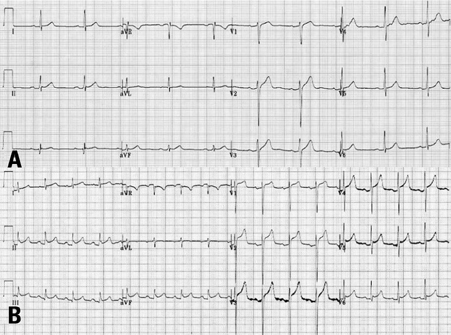Yonsei Med J.
2010 Mar;51(2):284-286. 10.3349/ymj.2010.51.2.284.
Postcardiac Injury Syndrome after Percutaneous Coronary Intervention
- Affiliations
-
- 1Department of Cardiology, Inha University College of Medicine, Incheon, Korea. kdhmd@korea.com
- KMID: 1126033
- DOI: http://doi.org/10.3349/ymj.2010.51.2.284
Abstract
- The post cardiac injury syndrome is characterized by the development of a fever, pleuropericarditis, and parenchymal pulmonary infiltrates in the weeks following trauma to the pericardium or myocardium. According to previous reports, almost all cases develop after major cardiac surgery or a myocardial infarction. Recently, a few reports have described post cardiac injury syndrome as a complication of endovascular procedures such as percutaneous cardiac intervention. Here we describe an unusual case of post cardiac injury syndrome after a percutaneous coronary intervention.
MeSH Terms
Figure
Reference
-
1. Gungor B, Ucer E, Erdinler IC. Uncommon presentation of postcardiac injury syndrome: acute pericarditis after percutaneous coronary intervention. Int J Cardiol. 2008. 128:e19–e21.
Article2. Tang RB, Liu XH, Dong JZ, Liu XP, Kang JP, Ma CS. Postcardiac injury syndrome complicating circumferential. Chin Med J (Engl). 2007. 120:1940–1942.3. Khan AH. The postcardiac injury syndromes. Clin Cardiol. 1992. 15:67–72.
Article4. Seizner TJ, King TE Jr, Antony VB, Sahn SA. The pleuropulmonary manifestations of the postcardiac injury syndrome. Chest. 1983. 84:383–387.5. Setoyama T, Furukawa Y, Abe M, Nakagawa Y, Kita T, Kimura T. Acute pleuropericarditis after coronary stenting: a case report. Circ J. 2006. 70:358–361.
Article6. Light RW. Pleural effusions following cardiac injury and coronary artery bypass graft surgery. Semin Respir Crit Care Med. 2001. 22:657–664.7. Troughton RW, Asher CR, Klein AL. Pericarditis. Lancet. 2004. 363:717–727.8. Wessman DE, Stafford CM. The postcardiac injury syndrome: case report and review of the literature. South Med J. 2006. 99:309–314.9. Dressler W. The postmyocardial infarction syndrome; recurrent pericardtitis, pleurisy, and pneumonitis. Heart Bull. 1958. 7:102–104.10. Bajaj BP, Evans KE, Thomas P. Postpericardiotomy syndrome following temporary and permanent transvenous pacing. Postgrad Med J. 1999. 75:357–358.
Article11. Kim S, Sahn SA. Postcardiac injury syndrome. An immunologic pleural fluid analysis. Chest. 1996. 109:570–572.12. Hearne C, Forjuoh SN. Postcardiac injury syndrome after coronary angioplasty and stenting. J Am Board Fam Pract. 2003. 16:73–74.
Article13. Escaned J, Ahmad RA, Shiu MF. Pleural effusion following coronary perforation during balloon angioplasty: an unusual presentation of the postpericardiotomy syndrome. Eur Heart J. 1992. 13:716–717.
- Full Text Links
- Actions
-
Cited
- CITED
-
- Close
- Share
- Similar articles
-
- Early-Onset Postcardiac Injury Syndrome after Percutaneous Coronary Intervention Recovered with Steroids
- Recent Advances in Percutaneous Coronary Intervention in Coronary Artery Disease
- Staged versus One-Time Percutaneous Coronary Intervention Strategy for Multivessel Non-ST Segment Elevation Acute Coronary Syndrome
- Forearm Compartment Syndrome after Transradial Percutaneous Coronary Artery Intervention
- The percutaneous coronary intervention in elderly women over 70 years of age




